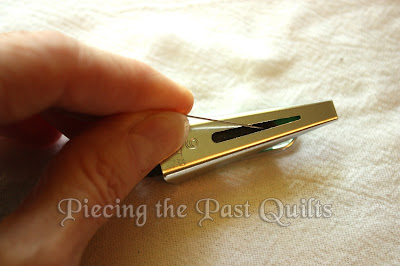In our quilt group, Friendship Quilts are something that have been going on for 2 decades. Having joined only a few years ago, I've only had the pleasure of participating in a few.
Obviously they have been a wonderful part of quilting communities for centuries.
What I didn't know is that there are two distinct kinds of what we today call "Friendship Quilts."
The classification of these labors of love is actually "Signature (or Autograph) Quilts" and is broken into two categories. An article on Womenfolk.com talks about them:
"There are two distinct kinds of autograph quilts. Single pattern quilts are often referred to as "friendship quilts" while the more formal quilts made of different blocks are called "sampler album quilts.""
I've come across a few of both kinds recently as I've perused Pinterest.
The first would be considered a sampler album quilt.
Isn't this an amazing beauty?
It is entitled simply "Made for Ella Maria Deacon" (1811-1894)
Can you IMAGINE being the recipient of this??
It was made in 1841 & 1842 in Mount Holly, New Jersey, which would have made Ella Maria 31 years old. I wonder who she was and what it was about her that inspired all these people to lovingly make such a treasure?
There are 85 blocks, all of which have either a person's name associated with them, or a poem written on them. Some of them have men's names, which interests me greatly.
They are either pieced or appliqued, some with broderie perse, and to me it looks as if someone coordinated the effort, because the color play is just wonderful.
It appears to be in immaculate condition, which speaks volumes of the value this was to the recipient and following generations.
You can read more about it at the Art Institute Chicago.
The list of names of the people involved represent families and individuals.
Wouldn't it be fun to know their stories?
* * * * * * * * *
These two would be considered friendship quilts because the blocks are all the same.
How amazing is this?!?
Turkey Red Fleur de Lis made in Pennsylvania, circa 1850.
Someone had to have coordinated this one, as well, as the block/fabric placement is perfect.
Unfortunately, I don't have any more information about it than that.
This is a classic signature album quilt made in 1843.
It is dubbed "Sweet Sister Emma"
It was made by Martha Knowles for her sister Emma Sheppard,
and consists of 64 inscribed blocks.
Most have signatures and Bible verses.
You can read more about it at The Quilt Index.
So, are you inspired to make a Friendship Quilt for someone? Or hope that your quilt group will take up the tradition of making them for each member in turn, as ours has? Such treasures!
Happy Quilting!
PLEASE NOTE:
- I am not a quilt historian. I simply enjoy finding interesting quilts and sharing them with you!
- The quilt images on this post were sourced from Pinterest unless otherwise noted, and are linked to their origin whenever possible.






































